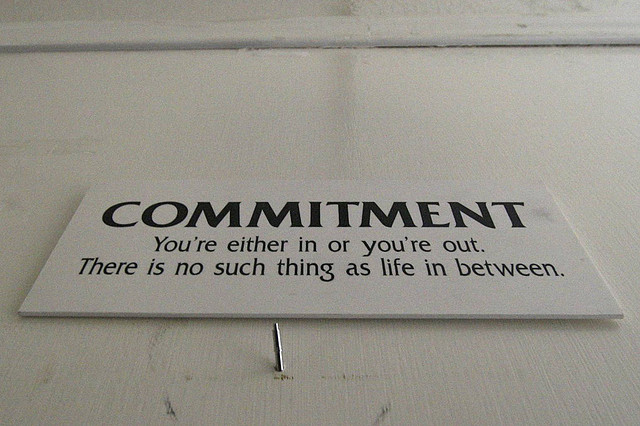Commit and Reveal
Note From Editor:
This month we have a beautiful peace of warm, smooth and powerful magic from my good friend Brad “Scarnecky” Gordon. Take the time to really study what this effect is all about. At first glance it seems to be a simple pick a card trick. It’s so much more than that. Re-read it several times until you “get it.”
– Jeff Stone
Introduction
This effect comes straight from a dream I had a while back. There is something about having a spectator commit to a card by writing his/her name on it, or in this case folding it.
Effect
A deck of cards flows into use. You (the magician) turn around (back facing the participant). You instruct him/her to turn the cards face up, cut the cards & complete the cut. He/she is asked to do this “cutting & completing” several times until she finds a card of her liking. When she does, she is instructed to take that card and fold it into forths, so the back design is showing (card face becomes hidden).
Your spectator is then instructed to place the folded card underneath her left hand. She is now asked to cut and complete the cards again a few times with her right hand until she see’s a card she’d like to reveal to the magician and stop. Finally the magician turns around and through mental telepathy the folded (committed) card is revealed.
Method and Set up
Si Stebbins stack and a peek- pretty simple.
The psychology behind this effect, from my personal perspective lies in the way the card is chosen and committed to. How often do we actually have a spectator chose a card then fold it into forths before hiding it?
This out of sight, underneath the spectators hand scenario creates a clearly impossible situation. Additionally the reason behind having the participant cut the deck again- is so that the card she allows to be seen will “reveal” (psychologically) everything about the card that is underneath her hand. It’s a ruse, but this becomes the motivation behind everything that is happening.
The Peek
The Peek:
There are 2 different points/moments where you can use a peek to find out what the folded card is. The first one is a Jeff Stone contribution; where the magician turns around after the “reveal” card is chosen/stopped at. The deck is given a quick (face up) ribbon spread on the table, and just by locating the only two cards that are next to each other (the same color)- the card that sits on the bottom of (or below) will give you the identity of the folded card (via the si-stebbins stack). This of course is done very casually and smoothly while recapping upon what has transpired. After the spread, turn the cards face down and shuffle the deck a few times thus getting rid of the “set-up” evidence.
- I personally don’t shuffle the cards until after the revelation. I think it’s running when not being chased. The best scenario would be to go right into an effect which only uses a few cards, because clearly the deck is now incomplete/ruined (in the spectators mind). Which totally justifies a quick shuffle followed by removing a few cards such as the 4 aces etc.
Note: Jeff Stone has informed me that this will also work with the 4 Kings set up.
The second peek is an idea given to me by the ever so amazing Derrick Welling; which is quite clever. After the spectator has folded the “committed” card, you say something like “Ok you’ve got that card folded & hidden away?” at the same time very casually turn your head as if to make sure, and peek the now exposed face up card, which sits on top of the deck. You turn back around and then follow through with the (instructed) cutting/completing/reveal card sequence. In this case you obviously don’t need to spread the cards face up, you can simply turn the cards face down and slowly, very magically reveal the folded/hidden card.
- There is plenty of time misdirection in play using this peek. Also as you peek make sure your spectator doesn’t “see” you looking at the tabled card. Peek “it” before you make eye contact with her, or better yet simply use your powerful peripherals- be ultra sneaky.
I trust the simplicity of this effect doesn’t stop you from giving it a try, you just might be surprised by exactly “who” it fools and how impressive it plays.
The Dream
Originally in my dream, the method required no peek or set-up. The spectator could shuffle the deck as much as desired, and the effect could still be accomplished. Of course this would be the perfect scenario, but as of yet, the following method is the best I’ve developed. If you formulate another method to accomplish “Commit and Reveal” please let me know, I’d love to hear what you imagine.
As always have fun
Warmly
Brad “Scarnecky” Gordon


Leave a Reply